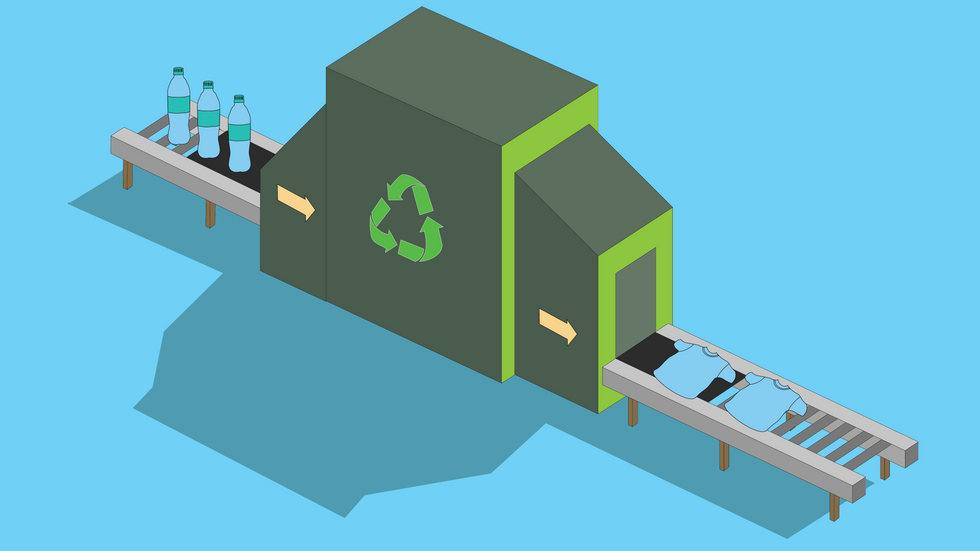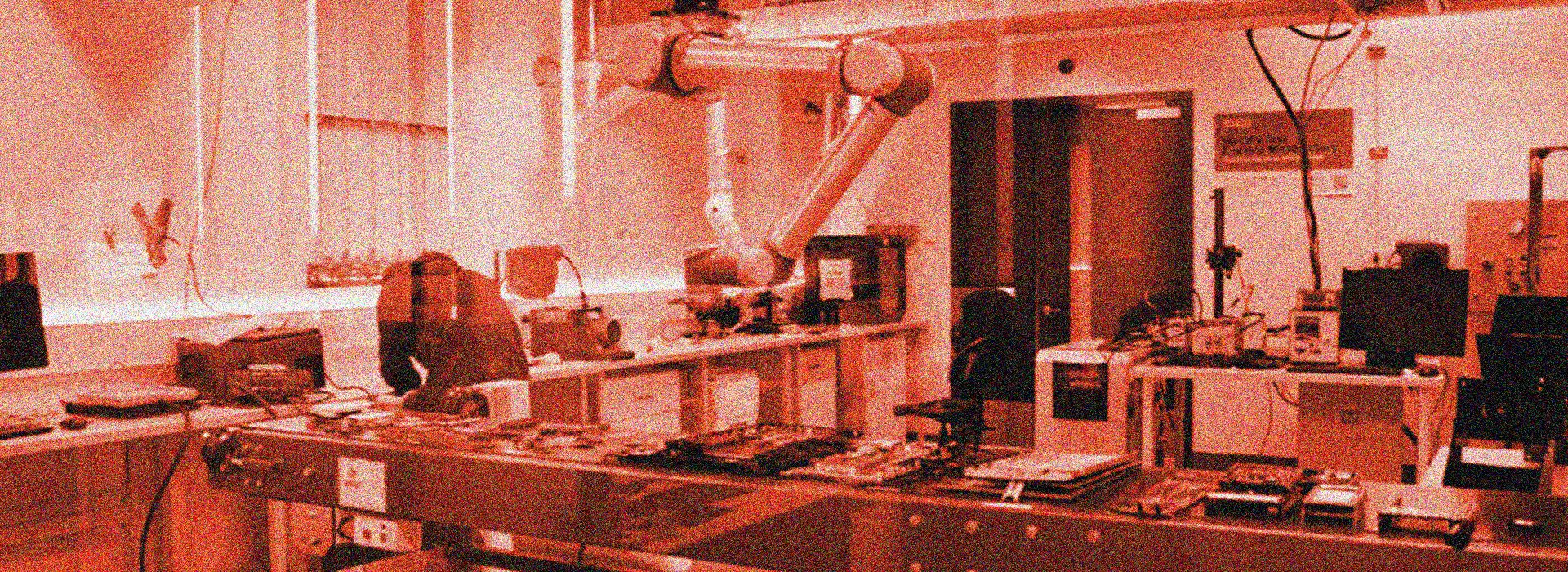Cigarette butts and washed-up pens can be part of the waste solution.
Picture this: wearing clothing made from plastic drink bottles, while walking around a house that was partly made from broken glass and old smart phones. While it may seem farfetched, it is a scenario that is already possible, but could become far more common as local businesses and communities embrace a growing trend towards a "circular economy".
Based on a "cycle of disassembly and reuse", circular economies aim to "[eliminate] waste from the industrial chain by reusing materials to the maximum extent possible", according to the World Economic Forum (WEF). As Australia faces a "recycling crisis" following China's refusal to continue taking our recyclables, many are suggesting the solution is quite simple: treating our own trash as a treasure.
It's an idea that has seen cigarette butts transformed into ashtrays and recycled pens into outdoor furniture, according to global recycling initiative TerraCycle. Aiming to "eliminate the idea of waste", the group has diverted 4 billion pieces of "non-recyclable waste" from landfill worldwide, including toothbrushes, cosmetics, and chip packets donated by 80 million participants in Australia and worldwide.

With the right technology and sufficient funding, the waste products – which are currently considered "non-recyclable" – can contribute valuable resources, according to Liz Keen, spokeswoman for TerraCycle Australia. "The greatest barrier to recycling isn't the plastic composition of a product, it's actually economics," said Ms Keen.
"Things like coffee capsules, yoghurt pouches and cosmetics, they have a more complex mixed plastic composition. And if you were to on-sell the recycled by-product… it wouldn't be enough to cover how much it costs to collect and recycle.
"A lot of people think that they must be made of a plastic that simply cannot be recycled, but in truth everything can be recycled."
Sponsored by big-name brands such as Colgate and Nescafé, the Australian branch of TerraCycle rents out local recycling facilities across Australia where they shred, wash and melt waste plastics donated by the public into pellets, which can be used as "sustainable raw materials".
According to Ms Keen, the manufacture-ready plastic pellets have been used to make planter boxes, picnic tables, watering cans and frisbees. In early 2018 the company converted 145,000 otherwise non-recyclable plastic beauty products donated by primary school students into new playground equipment.
In a report published in 2014, the WEF estimated more than US$1 trillion a year could be saved globally if companies adopted circular economy tactics, as the availability of recycled materials would drive down costs of manufacturing.
Yet in 2016-2017, Australia sent approximately one third of all our paper, cardboard and plastics collected from kerbside recycling programs to China, according to a report prepared by Blue Environment for the government in May last year.
From January 1, 2018, 99 per cent of these exports have been effectively banned, according to the report, following China's refusal to take any more low-grade recycling waste.
The 'expensiveness' of recycled fabrics in comparison to non-recycled competitors still depends on the price of petrol.
For Veena Sahajwalla, Director of the Sustainable Materials and Recyclable Technology Centre ('SMaRT') at UNSW, part of the reason behind the current "recycling crisis" is the attitude among the Australian government and public that recyclables are a "burden that has to be dealt with", rather than a potentially valuable asset.
"The one thing we have in common is generally a lot of waste, no matter where you are in the world. There's huge opportunity there," Professor Sahajwalla said.
"It's really all about creating products that are built on the back of materials that we throw away, recognising that [they] fundamentally still have their inherent properties.
"A piece of broken glass… might be… no longer useful as a glass bottle. But it still can be useful as another product, that comes to life in a completely different way."
Based on this philosophy, Sahajwalla has designed world-first "micro- factories", pictured above, which can be used by businesses or communities to transform commercial and household waste back into 'raw materials'.
Designed to be flexible, the technology can transform mixtures of waste glass, plastics, metals, timber and textiles into materials and products used by industry, such as building panels and beams.
"Micro-factories [are] all about relying on local waste resources, which means you don't have to depend on importing expensive raw materials from elsewhere [or] shipping your waste," she said. "[At] first, I asked everyone to bring in their takeaway containers from home… and we were using that as our feedstock."
Known as 'micro-factories' because they measure just 50 square metres, the machines can be added into existing factories, allowing manufacturers to recycle their waste onsite into raw materials.
Recently, UNSW's micro-factories have been tackling notoriously difficult e-waste, breaking it down into valuable metals such as copper and gold, and plastic filaments to be used as 'ink' in 3D printing.
Various manufacturers – whose products vary from spectacles to mining equipment – have already licensed the technology to integrate into their supply chains, according to Sahajwalla.
But in Sahajwalla's view, the micro-factories could also play a role on a smaller scale by helping community groups deal with their own waste, and making products for local businesses.
"You could be in a really remote community in the middle of Australia, and you could be making building products… for housing projects locally in their community right there," she said. "Say you manufactured more than you needed, you could be selling it as well."
But currently, a significant hurdle for companies wanting to embrace the circular economy is the prevalence of cheap mass-produced products made from 'virgin' non-recycled materials.
Australian-owned company Vivify Textiles uses empty plastic bottles purchased from various countries to make recycled polyester fabrics, and "fishing nets left at sea" to make recycled nylon.
But the 'expensiveness' of their recycled fabrics in comparison to their competitors still depends on the price of petrol – from which polyester is normally made, a spokeswoman for the company said.
"Expensive is relative – it would depend at which price point you compare [recycled] RPET yarn with normal poly yarn," the spokeswoman said.
"When petrol prices are high, the RPET yarns are similar. When petrol price is low, RPET yarn is slightly more expensive."
But ultimately, the success of such recycled products comes down to consumer behaviour. In an online survey of 80 people conducted for this story, four out of every five people said they would be willing to pay more for a product made from entirely recycled materials.
But given an example of a t-shirt made from recycled materials, more than two-thirds of people said they would only be willing to spend $0-20 more than on a non-recycled t-shirt.
It is an obstacle often faced by companies using recycled materials, as there currently is limited demand for such products, according to Elsa Dominish, senior research consultant at the University of Technology Sydney.
"A lot of companies face the issue [that] they don't have a lot of people who want to buy [recycled] products yet," said Dominish.
"[Recycled] textiles… might only supplement a small amount of what people are buying, instead of new textiles.
"So, a recycler might want to invest in new processing facilities but they need to know they can supply a big enough [market]."
While it is "generally more expensive to use recycled" materials in manufacturing, Dominish sees circular manufacturing schemes as a "good part" of waste management.
"It's still really good. And maybe these Australian technologies can be exported to new places, and scale up," she said.
"We're not accounting for the full environmental cost for using virgin plastics. If we took that into account, the world would be a different place."






Afraid of an egg: the tyranny of living with social media's body standards